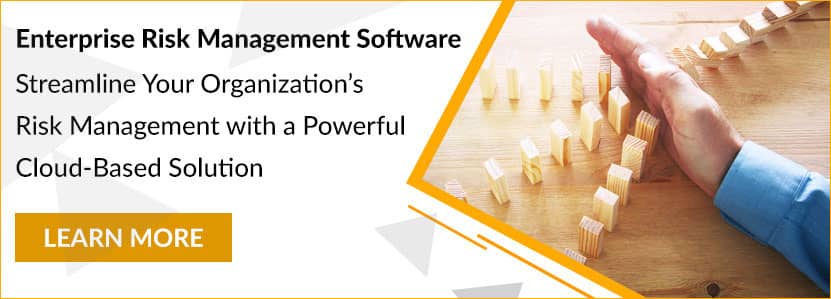Home/ Blog / How Risk and Compliance Technology is Transforming the Financial Industry
We are seeing a significant shift occur in the banking industry due to technological breakthroughs and societal forces altering how individuals and businesses engage with the bank. Risk and compliance managers are at the vanguard of this transition and will be expected to make substantial contributions to enabling new financial services, product lines, and delivery methods. Banks will need to navigate this new reality skillfully over the next decade to remain competitive.

One of the most noticeable trends is that banking rapidly transforms into an instant service. Numerous banking processes have historically included an element of waiting. Banks can take hours, if not days, to process and verify the documents necessary to open new accounts or provide services. This was widely accepted because it was recognized that the bank was responsible for verifying everything, assessing risks, ensuring compliance with all applicable legislation, and following all needed procedures. However, customers today desire speedier banking due to their experience with faster financial services given via mobile apps and other alternate delivery channels.
Ensuring Risk and Compliance Management During Transitioning
Compliance management programs will need to be rethought to provide instant banking services. Banks will need to automate compliance using new solutions to complete a transaction in seconds, as regulatory standards must be met in all circumstances. This will necessitate a complete digital transformation of the compliance management architecture, including implementing automated and optimized processes.
Similarly, as immediate banking services become more prevalent, risk managers will be required to update risk management frameworks to automatically monitor and assist in managing risks. As the pace of banking accelerates, risk managers will want robust technology-based solutions that give real-time metrics on risks across the bank and enable them to intervene fast when necessary. Using risk data intelligently to provide real-time risk metrics is key to the success of any automated risk management system. This will need many risk managers to rethink their current risk management procedures.
The majority of large banks are already concentrating their efforts on risk and compliance processes to prepare for the future and provide superior service in the present. Additionally, smaller and mid-sized banks must guarantee that their risk and compliance management platforms are future-proof.
The change in communication regarding risk and compliance is one of the most significant paradigms shifts when risk and compliance technology is implemented. Share on XUnderstanding the Current Challenges
When auditing a risk or compliance issue to determine the root cause, many organizations notice that the primary issue is frequently a lack of communication between all relevant parties. People make incorrect decisions not because they cannot comprehend what needs to be done but they lack the necessary information to make the correct choice.
It is critical to remember that communication difficulties are not the issue — these are merely symptoms of the issue. If departments are not communicating properly, the solution is not to require them to communicate more frequently. Communication occurs in conducive circumstances., rather than requesting that employees communicate more frequently. Managers should focus on processes and organizational improvements to reduce communication issues.
Risk and compliance management are inextricably linked. Risk managers require knowledge of risks occurring within the organization. They cannot monitor all risks and controls occurring within the organization, so they rely on others to alert the risk team about the actions that increase risks. Compliance managers, like other members of the organization, rely on communication. The compliance team will perform significantly better if other departments are more transparent regarding compliance challenges and methods that make compliance challenging.
This communication frequently fails to occur. Risk and compliance teams often uncover issues due to their audits and monitoring systems. Businesses need to comprehend why this occurs. Other departments frequently lack visibility into risk and compliance processes; they are only aware of the standards necessary to manage risks and assure compliance. As a result, they may be unaware of the effect of various processes on risk and compliance management frameworks.
In simpler terms, critical information is not communicated to the risk and compliance departments directly. Other employees dislike to communicate with risk and compliance teams due to the lack of information and expertise necessary to comprehend what must be communicated immediately to risk and compliance teams. To address this issue effectively, a different approach is required – rather than encouraging communication, the emphasis should be on making risk and compliance information accessible.
The change in communication regarding risk and compliance is one of the most significant paradigms shifts when risk and compliance technology is implemented. A lot of the manual communication efforts are not needed anymore as the relevant information is automatically sent where it is needed – the way modern risk and compliance platforms are designed helps disseminate information throughout the enterprise without requiring much manual intervention. Most risk and compliance information is accessible to risk and compliance stakeholders directly through the platform. This change in shared information removes bureaucracy from the equation and lets the risk and compliance teams work at total efficiency.
Interested in seeing how your organization can change the management of risk and compliance? Get in touch with our experts for a demonstration of our American Bankers Association (ABA) endorsed solution Predict360.
Request a Demo
Complete the form below and our business team will be in touch to schedule a product demo.
By clicking ‘SUBMIT’ you agree to our Privacy Policy.




